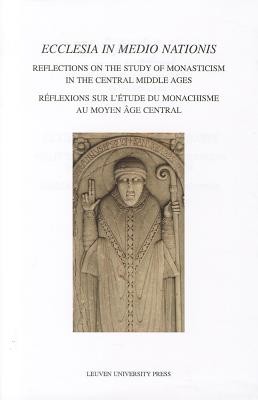
- We will send in 10–14 business days.
- Publisher: Leuven University Press
- Year: 2012
- Pages: 200
- ISBN-10: 9058678873
- ISBN-13: 9789058678874
- Format: 16 x 23.6 x 1.8 cm, softcover
- Language: English
- SAVE -10% with code: EXTRA
Ecclesia in Medio Nationis (e-book) (used book) | bookbook.eu
Reviews
Description
The role of monastic institutions in society during the Central Middle Ages has been much debated in medieval studies. Some scholars saw monasticism as the principal motivator of economic, social, intellectual, and "spiritual" progress in human society, while others regarded monastic ideology as fundamentally antisocial and oriented toward itself.
These debates remained pertinent until the final decades of the twentieth century, but seem to have lost some of their relevance to the present-day scholar. Today monasticism is studied as a social entity that needed interactions with the outside world to survive and to give a clear sense of purpose to its members. Drawing on recent trends in historical scholarship, this book--which contains four chapters in English (including the introduction and conclusion) and five chapters in French--seeks to identify some of the major questions that will dominate research into monasticism in the years to come. Contributions deal with the evolution of monasticism itself, its links with aristocracy, the economic relations of religious communities and their physical and ideological boundaries, and the representation of the outside world in monastic manuscripts.
EXTRA 10 % discount with code: EXTRA
The promotion ends in 20d.09:11:40
The discount code is valid when purchasing from 10 €. Discounts do not stack.
- Publisher: Leuven University Press
- Year: 2012
- Pages: 200
- ISBN-10: 9058678873
- ISBN-13: 9789058678874
- Format: 16 x 23.6 x 1.8 cm, softcover
- Language: English English
The role of monastic institutions in society during the Central Middle Ages has been much debated in medieval studies. Some scholars saw monasticism as the principal motivator of economic, social, intellectual, and "spiritual" progress in human society, while others regarded monastic ideology as fundamentally antisocial and oriented toward itself.
These debates remained pertinent until the final decades of the twentieth century, but seem to have lost some of their relevance to the present-day scholar. Today monasticism is studied as a social entity that needed interactions with the outside world to survive and to give a clear sense of purpose to its members. Drawing on recent trends in historical scholarship, this book--which contains four chapters in English (including the introduction and conclusion) and five chapters in French--seeks to identify some of the major questions that will dominate research into monasticism in the years to come. Contributions deal with the evolution of monasticism itself, its links with aristocracy, the economic relations of religious communities and their physical and ideological boundaries, and the representation of the outside world in monastic manuscripts.


Reviews